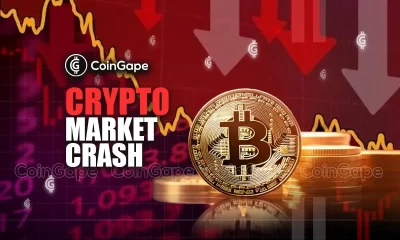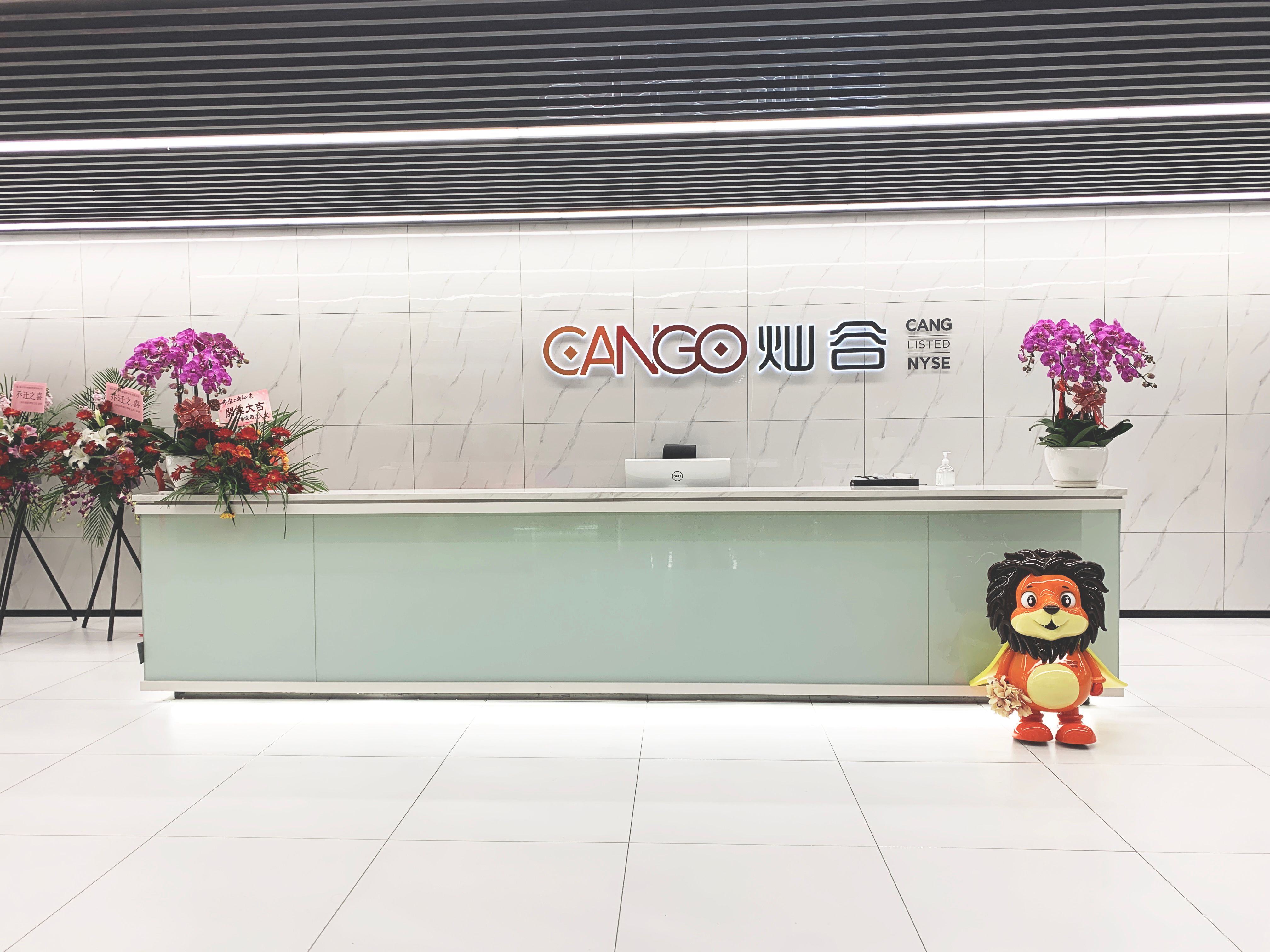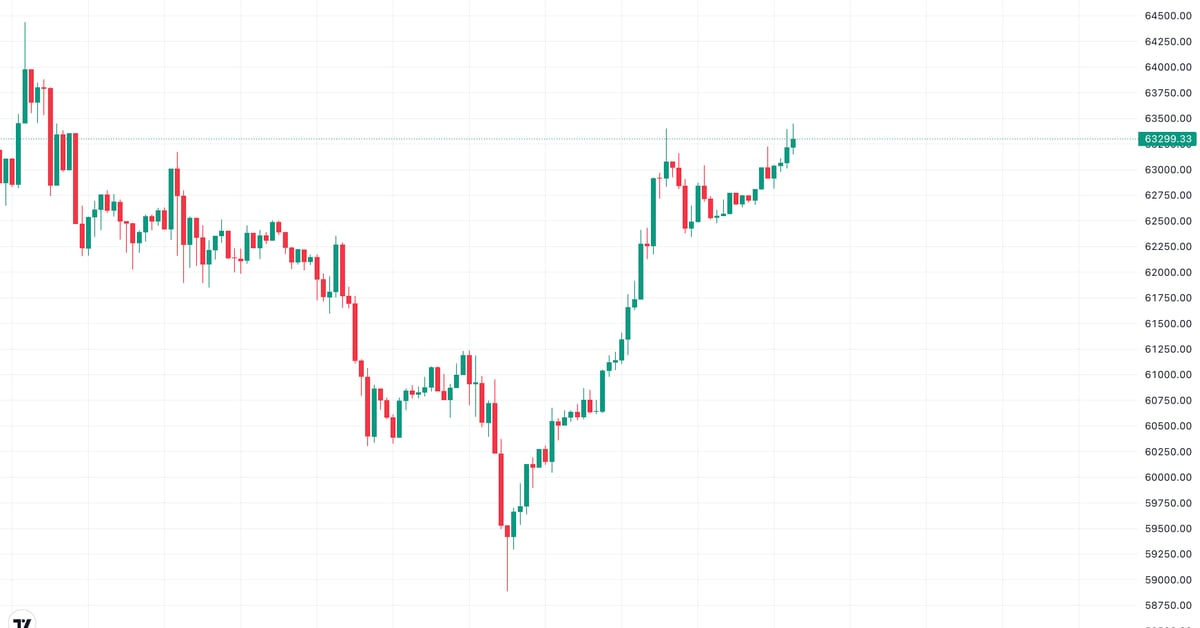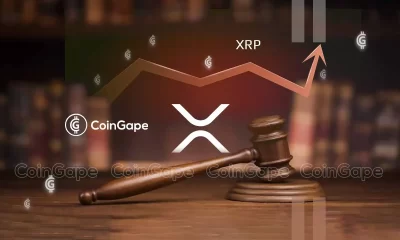China
Edith Yeung Sees Big Things to Come for Crypto in Hong Kong
Published
4 days agoon
By
admin

As the co-founder and general partner at early stage venture capital fund Race Capital, Edith Yeung has had a front-row seat on the development of the crypto sector, particularly in Hong Kong, where she was born and raised. Most notably, she was a seed investor in Solana, investing $250,000 when SOL was valued at just $0.04, and also was an early investor in Lightning Network. Since 2017, Yeung has also authored the China Internet report, an influential annual survey of technology trends in China.
Here, Yeung, who will be a speaker at Consensus Hong Kong, discusses Hong Kong’s ongoing development as a crypto hub, her take on China’s stance towards crypto, what she foresees for Solana and one big crypto prediction for 2025.
This series is brought to you by Consensus Hong Kong. Come and experience the most influential event in Web3 and Digital Assets, Feb.18-20. Register today and save 15% with the code CoinDesk15.
Interview has been condensed and lightly edited for clarity.
How do you see crypto regulations developing in HK in 2025? Do you think more crypto companies will become licensed by the SFC in 2025?
It’s exciting to see that Hong Kong now has seven SFC-licensed virtual asset trading platforms. From an investor’s perspective, having a clear licensing regime is a major step forward. Regulatory clarity and predictability are like well-lit roads — they give investors the confidence to drive forward without worrying about unexpected detours.
That said, licensing alone isn’t enough. Liquidity is the other critical piece of the puzzle. Think of a trading platform like a brand-new highway: you can have the smoothest pavement and clearest signs, but if no cars are on it, drivers won’t bother. Similarly, no matter how many licenses you have, if there’s no active trading and liquidity, investors will hesitate to come aboard.
The key for Hong Kong now is to build not just the infrastructure but the traffic flow — because a great platform without liquidity is like an empty highway going nowhere.
What kind of role do you see Hong Kong developing in terms of the crypto sector, especially in relation to the US? What about Asia more broadly?
Hong Kong is the New York of Asia. Exchange Square is basically Wall Street — a 24/7 financial powerhouse with soaring skyscrapers and streets full of traders, investors and bankers with energy that never quits. If you are a crypto builder or investor, you will find many TradFi talents (traders, market makers, etc.) in Hong Kong.
To build a successful TradFi or DeFi company, you need to recruit specific types of talent that are hard to find even in Silicon Valley. Hong Kong boasts a rich financial history, with its stock market origins dating back to 1866 — over 150 years — means there is a deep pool of experienced professionals who can drive innovation and growth in your venture.
What would you say is distinctive about HK/Southeast Asia for crypto compared to the US and Europe?
The U.S. is home to the largest crypto addressable market in terms of institutional investors, regulators and builders. But Asia is home to the highest growth potential for the crypto market. In 2024, half of the top 10 countries in the world ranked by crypto adoption were located in Asia.
With the new Trump administration, the U.S. will continue to set the tone for crypto regulation and institutional adoption (e.g., BlackRock ETF). Asia will follow their lead with its massive usage base that is young and crypto-native.
Do you view China as generally pro or anti-crypto? There’s been a lot of crypto activity there, but at the same time, the government is officially against mining and speculation.
Hong Kong is part of China. Seeing pro-crypto regulation slowly forming in Hong Kong is a great sign and indicator for China. That said, China literally has an army of 220 million retail investors sitting on almost $21 trillion worth of savings. With a lingering property crisis and a meek economy, however, it is very difficult to say when China will open up for crypto business again, as the government focuses on these larger issues.
You were a seed investor in Solana; do you still have your initial investment there? Do you think Solana will continue to attract as much memecoin activity as it did in 2024?
Yes. It was an honor that I got to meet Solana co-founders Anatoly Yakovenko and Raj Gokal and become their seed investor back in March 2018. I am a long-term Solana holder and supporter. What I love about them is their dedication to building and their support for the developer community. The developer energy at the 2024 Breakpoint conference was high not only because of memecoins.
The Firedancer team made huge technical advances last year, and I just love that Anatoly is still head-down geeking out with people like Jump Trading chief science officer Kevin Bowers and his team every day. Even more exciting to me is seeing traditional finance players like Fidelity, Citi and PayPal speaking at Breakpoint about what they are building on Solana. This influx of established players not only validates Solana’s future but also signals that blockchain technology is ready for the masses.
What kinds of companies are you currently looking to invest in and why?
I am a seed investor in Huma Finance — a leader in PayFi building on Solana and a leader in stablecoin infrastructure. In 2024, they did over $2 billion in stablecoin transactions. At Race Capital, we will continue to focus on investing in internet infrastructure. Builders who want to be around long-term do not mind whether it’s an up or down cycle.
What’s something you think will happen in 2025 that will surprise crypto folks?
The establishment of a U.S. Bitcoin Reserve by the end of 2025. The United States is currently the largest holder of Bitcoin, with approximately 207,189 bitcoins. This effort will be bolstered by this massive stockpile, which is now valued at over $20 billion at current prices. This decision is expected to drive up bitcoin prices, prompting other governments around the world to follow suit.
What are you most excited to discuss onstage in Hong Kong?
Hong Kong’s role in building the crypto industry in 2025, China’s love/hate relationship with crypto and perhaps more insights on Solana.
Source link
You may like


Ripple CEO Brad Garlinghouse Confirms Mar-a-Lago Meeting with Donald Trump


The Most Eye-Catching and Absurd AI Products Unveiled at CES 2025 So Far


Meet Jason Marquez: The Truck Driver Who made $750,000 on MicroStrategy


Why BTC, ETH, DOGE, & Other Altcoins Fell


Arbitrum Awards Biggest-Ever Foundation Grant to Lotte, the South Korean Megacorp


Bitcoin Layer 2 Foundations Should Buy Bitcoin For Their Treasuries
Bitcoin mining
How Chinese Lending Firm Cango Became a Bitcoin Mining Powerhouse
Published
3 days agoon
January 5, 2025By
admin

The bitcoin (BTC) mining industry was shaken up in the last months of 2024 by the sudden entrance of a new player: Cango (CANG), a Chinese firm that specializes in providing loans to automobile buyers.
Based in Shanghai and valued at $363 million on the stock market, Cango is in the process of acquiring 50 exahashes per second (EH/s) worth of mining power, meaning that the auto lending platform will become one of the largest bitcoin miners in the world once its entire fleet goes online.
“I guess it’s surprising for people in the [bitcoin mining] industry because nobody has ever heard of Cango before,” Juliet Ye, the company’s senior director of communications, told CoinDesk in an interview. “But the history of Cango is a history of adaptation. We’ve diversified into different areas at least two or three times [since the firm was established in 2010].”
Getting such a large bitcoin mining fleet isn’t cheap. Cango paid $256 million in cash for the first 32 EH/s worth of computing power, which it purchased from bitcoin mining machine manufacturer Bitmain. It will be issuing $144 million worth of shares for the remaining 18 EH/s, which it is acquiring from Golden TechGen — a firm owned by former Bitmain Chief Financial Officer Max Hua — as well as other undisclosed mining machine sellers. Once the transaction is settled, Golden TechGen and these other sellers will end up owning approximately 37.8% of Cango.
The diversification into bitcoin mining is already bearing fruit. Cango’s stock finished 2024 at $4.56, up more than 362% from the start of that year. Even better, Ye said, this new bitcoin mining strategy has catapulted Cango into the spotlight.
“It’s been really hard for us to gain traction around the company, as a small- to mid-cap listed Chinese firm in the U.S.,” Ye said. “All of a sudden, a lot of people are very much interested in Cango. The buzz around the company — we’ve never seen this before in the past.”
50 EH/s
Cango is more used to helping Chinese banks issue loans for people looking to buy cars. But the firm, which went public in 2018, was already diversifying its operations years before acquiring its bitcoin fleet.
Cango started facilitating car exports from China to other parts of the world and has invested in Li Auto, a Chinese electric vehicle manufacturer. Following that investment, Cango explored business opportunities in the renewable energy sector, including high-compute power projects related to AI, before venturing into on bitcoin mining.
“Bitcoin mining is a very good way to rebalance energy grids,” Ye said, referring to the fact that bitcoin miners can easily switch their rigs off and on again. Some jurisdictions, like Texas, take advantage of that ability by encouraging miners to operate in periods of low energy consumption, and paying them to shut down their machines when local demand surges, like during heatwaves or blizzards.
With Bitcoin’s hashrate now hovering at 823 EH/s, Cango will be providing roughly 6% of the total computing power behind Bitcoin once the firm’s 50 EH/s fully come online. For reference, MARA Holdings (MARA), the largest publicly traded miner in the world, owned a little over 47 EH/s worth of computing power as of November, per TheMinerMag data. CleanSpark (CLSK) and Riot Platforms (RIOT), the two next largest, stood at 32 EH/s and 26 EH/s respectively.
“The Bitcoin mining sector’s imperative for scaled operations was a pivotal consideration in our decision to enter this domain,” Cango’s management team told CoinDesk in an email.
“The current landscape is marked by industry consolidation, with larger-scale operations becoming increasingly dominant due to escalating mining difficulty and the necessity for state-of-the-art hardware.”
One major difference between Cango and other mining heavyweights is that Cango isn’t operating its own mining fleet right now. With machines spread out around the world — including in the U.S., Canada, Paraguay and Ethiopia — Cango is still relying heavily on Bitmain for facilities and infrastructure, and to make sure the sites run smoothly.
“Even though we enter the industry with a significant amount of computing power, we are still new here, and we need time to adapt to the norms, and get a better understanding of the tax situation and the rest of the market,” Ye said. “So at the beginning, we chose to work together with Bitmain and to use its operations teams.”
That situation is likely to change over time, Ye said, as Cango gains experience in the sector and seeks to make its bitcoin mining operations more economically efficient. Nurturing an in-house mining team would likely be cheaper than relying on Bitmain’s expertise in the long run.
As for what Cango plans to do with its growing bitcoin stash, that will depend on how the year unfolds, Ye said. “We don’t rule out the possibility of making some tactical reductions [to the bitcoin holdings] based on market conditions,” she said. Cango mined 363.9 BTC in November alone, a sum worth roughly $35 million at the time of writing.
Source link
China
China May Be On the Verge of Ending Its Bitcoin Ban
Published
3 weeks agoon
December 18, 2024By
admin


Look, I think it’s only a matter of time before China pulls a complete 180 on its Bitcoin ban. Yes, they outlawed trading and mining back in 2021, but honestly, a lot has changed since then — especially this year. Bitcoin’s momentum globally has been insane.
We’ve seen US President-Elect Donald Trump calling to stockpile Bitcoin; Bitcoin ETFs get approved, Fed Chair Jerome Powell calling Bitcoin “digital gold,” Larry Fink flipping pro-Bitcoin, and even Putin saying nice things about it. With all of this happening, I wouldn’t be shocked if China has already started quietly stacking sats (buying bitcoin).
Here’s why I think that: China doesn’t like to announce what it’s doing beforehand — it’s just not how they operate. Former Binance CEO CZ talked about this recently at the Bitcoin MENA conference in Abu Dhabi, saying that while the US loves to make big public statements about upcoming policies (like Trump announcing Bitcoin plans to court voters), Asian countries prefer to move in silence.
And let’s not forget China doesn’t have elections. They don’t need to win over public opinion like Trump does. If they’re making moves with Bitcoin, they’ll do it quietly — and we’ll find out when they’re ready to make it official.
Now, with Trump’s big push for Bitcoin and crypto, I can’t see China sitting on the sidelines for too long. This is turning into a global race, and if China wants to stay competitive, they can’t afford to miss the Bitcoin train. My gut tells me they’re already planning to unban Bitcoin and crypto — and I wouldn’t be surprised if it happens as early as Q1 next year, especially if Trump takes office.
Another big hint? Hong Kong. China has a long history of using Hong Kong as a sandbox to test things before rolling them out on the mainland. And this year, we’ve seen Hong Kong make major moves — approving Bitcoin and crypto ETFs and greenlighting more crypto exchanges. Let’s be real: this isn’t a coincidence. They are planning to eliminate crypto taxes for institutions. I think China is watching carefully, and these are early steps toward a broader shift.
In my opinion, China has likely been quietly accumulating bitcoin all along. When the time is right, they’ll unban it — and not just to compete with the US, but to lead. Watch this space. I think it’s going to happen much sooner than most people expect.
This article is a Take. Opinions expressed are entirely the author’s and do not necessarily reflect those of BTC Inc or Bitcoin Magazine.
Source link
Bitcoin
Bitcoin (BTC) Takes Another Shot at $63.5K as China’s Vague Fiscal Stimulus Deters Capital Shift
Published
3 months agoon
October 12, 2024By
admin

Bitcoin, the leading cryptocurrency by market value, rose to nearly $63,500 during North American hours, probing a downtrend line characterizing the pullback from late September highs above $66,000, according to data source CoinDesk and TradingView. Prices topped $63,400 late Friday but failed to sustain the move and dipped to $62,400 early today.
Source link
Ripple CEO Brad Garlinghouse Confirms Mar-a-Lago Meeting with Donald Trump
The Most Eye-Catching and Absurd AI Products Unveiled at CES 2025 So Far

Meet Jason Marquez: The Truck Driver Who made $750,000 on MicroStrategy

Why BTC, ETH, DOGE, & Other Altcoins Fell
Arbitrum Awards Biggest-Ever Foundation Grant to Lotte, the South Korean Megacorp

Bitcoin Layer 2 Foundations Should Buy Bitcoin For Their Treasuries
Bitwise CIO Reacts As Czech Republic Mulls Bitcoin Reserve
XRP Could Rocket 470% If History Repeats, SuperTrend Suggests
From Laser Eyes to Upside-Down Pics: The New Bitcoin Campaign to Flip Gold
WazirX hack victims to receive aid from new CoinSwitch fund
Why Tim Draper Sees BTC as the ‘Next Netflix’?
‘Hype Cycle’ To Last Another Four Months for This Altcoin Sector, According to Real Vision Analyst Jamie Coutts
a16z crypto outlines top 5 trends shaping crypto’s future in 2025
US CFTC Chair Rostin Behnam To Depart On January 20
Crypto exchange Backpack, founded by former FTX execs, acquires FTX EU

Ethereum’s lowered yield might signal a paradigmatic shift in the ecosystem

Telegram users can send gifts to friends, TON fails to pump

Bitcoin Could Rally to $80,000 on the Eve of US Elections

Institutional Investors Go All In on Crypto as 57% Plan to Boost Allocations as Bull Run Heats Up, Sygnum Survey Reveals

Crypto’s Big Trump Gamble Is Risky

A Kamala Presidency Could Be Just as Bullish for Bitcoin

Arthur Hayes, Murad’s Prediction For Meme Coins, AI & DeFi Coins For 2025

Ripple-SEC Case Ends, But These 3 Rivals Could Jump 500x

SEC filing underway, Bitcoin rewards app Fold adopts FLD ticker

Cardano and the XRP price action lock in bulls vs bears battle as RCO Finance prepares for 3,000% surge

A16z-backed Espresso announces mainnet launch of core product

Tether CEO Paolo Ardoino Denies Rumors That Stablecoin Issuer Is Under Federal Investigation

Crypto Exchange OKX Moves To Support USDC Ecosystem by Adding Six New Trading Pairs

Trump’s Coin Is About As Revolutionary As OneCoin

Ripple Vs. SEC, Shiba Inu, US Elections Steal Spotlight
Trending

 DeFi3 months ago
DeFi3 months agoEthereum’s lowered yield might signal a paradigmatic shift in the ecosystem

 News3 months ago
News3 months agoTelegram users can send gifts to friends, TON fails to pump

 Bitcoin2 months ago
Bitcoin2 months agoBitcoin Could Rally to $80,000 on the Eve of US Elections

 Bitcoin2 months ago
Bitcoin2 months agoInstitutional Investors Go All In on Crypto as 57% Plan to Boost Allocations as Bull Run Heats Up, Sygnum Survey Reveals

 Opinion2 months ago
Opinion2 months agoCrypto’s Big Trump Gamble Is Risky

 Opinion3 months ago
Opinion3 months agoA Kamala Presidency Could Be Just as Bullish for Bitcoin

 24/7 Cryptocurrency News2 months ago
24/7 Cryptocurrency News2 months agoArthur Hayes, Murad’s Prediction For Meme Coins, AI & DeFi Coins For 2025

 Price analysis2 months ago
Price analysis2 months agoRipple-SEC Case Ends, But These 3 Rivals Could Jump 500x


